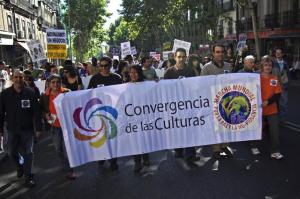 Imagine starting your life in a new country: new job, friends, culture and landscape. Would you accept a lump sum to uproot your new life and return to your native country, unable to return for three years? Spanish immigrants are asking themselves this very question, as the 2008 Voluntary Return Plan that offers those options is evaluated to help solve the immigration issue.
Imagine starting your life in a new country: new job, friends, culture and landscape. Would you accept a lump sum to uproot your new life and return to your native country, unable to return for three years? Spanish immigrants are asking themselves this very question, as the 2008 Voluntary Return Plan that offers those options is evaluated to help solve the immigration issue.
The plan is aimed toward legal immigrants who have lost their jobs. These immigrants who chose to participate in the plan will receive a lump sum of 40% of their unemployment payouts before they leave Spain and 60% once they return to their native country. They are not allowed to return to Spain for three years. This weighs out to be about $40,000 total.
When the plan was first put into effect, the government estimated about 1 million immigrants would accept the proposition. Nearly three years later, that is not so. Only 17,000 migrants from the U.S., Africa and Eastern Europe have decided to return home and accept the money.
TIME magazine comments on the disappointing results of the plan: “Insufficient funding, along with inadequate promotion and explanation, are some of the reasons that Carlos Giménez, Director of the Institute for Migration, Ethnicity and Social Development at Madrid’s Autonomous University, believes the Return Plan hasn’t had more adherents. But the real problem, he suggests, is the provision that requires departing migrants to surrender their residency permits, and agree not to return to Spain for at least three years. ‘You’re asking people to give up something they’ve worked hard to earn,’ he says. ‘I understand why the government is concerned about … a scenario where someone takes the money, and turns around and comes back. But there are things they can and should do to protect against that, while still protecting people’s juridical status.'”
Spain’s economy is still trying to recover from the recession that began in 2008 and has a 20% unemployment rate, the highest in Europe. The 30% unemployment rate among migrants should lend more success to the plan, yet it still hasn’t caught on as expected. There has been some limited success, however. For the first time in ten years, the immigration rate has declined and immigrants are intrigued and asking about the plan.
The government is still grasping at straws to solve the unemployment problem and alleviate issues related to illegal immigrants, but the Voluntary Return Plan is not the ultimate answer.
Prime Minister José Luis Rodríguez Zapatero’s recent decline for a third term may help as a new prime minister will take the burden on his/her shoulders. In the meantime, immigrant-related violence, issues of cultural dilution and unemployment remain grave issues for Spain.
